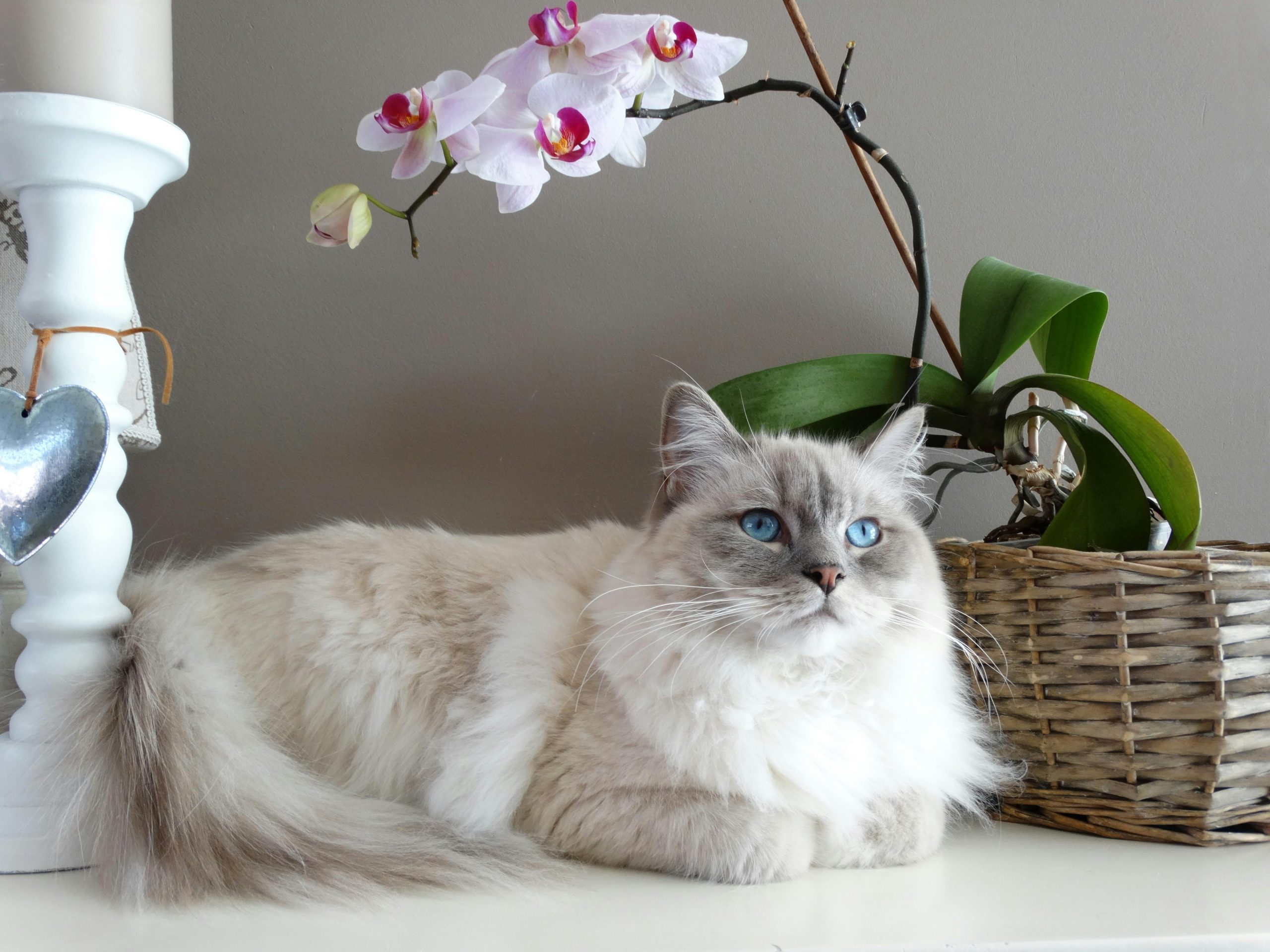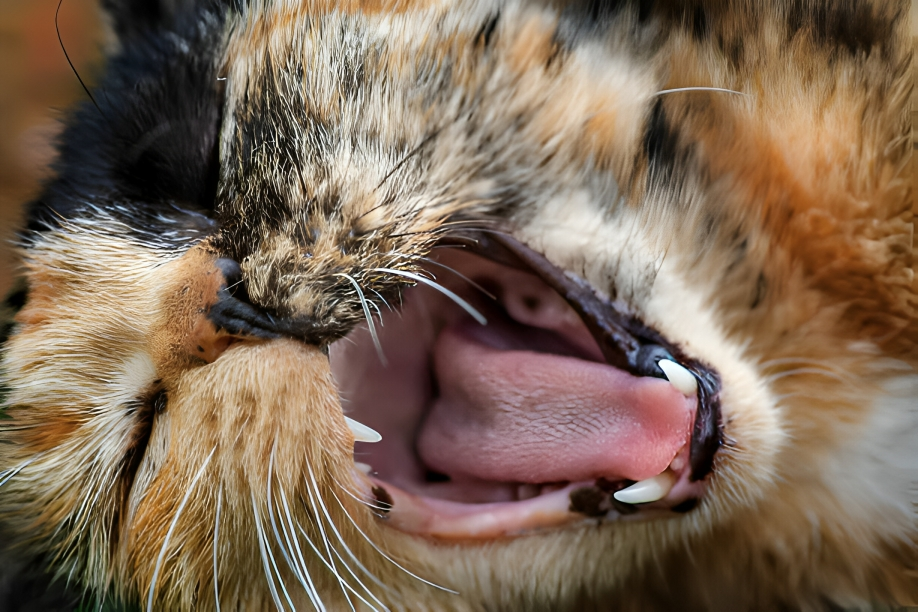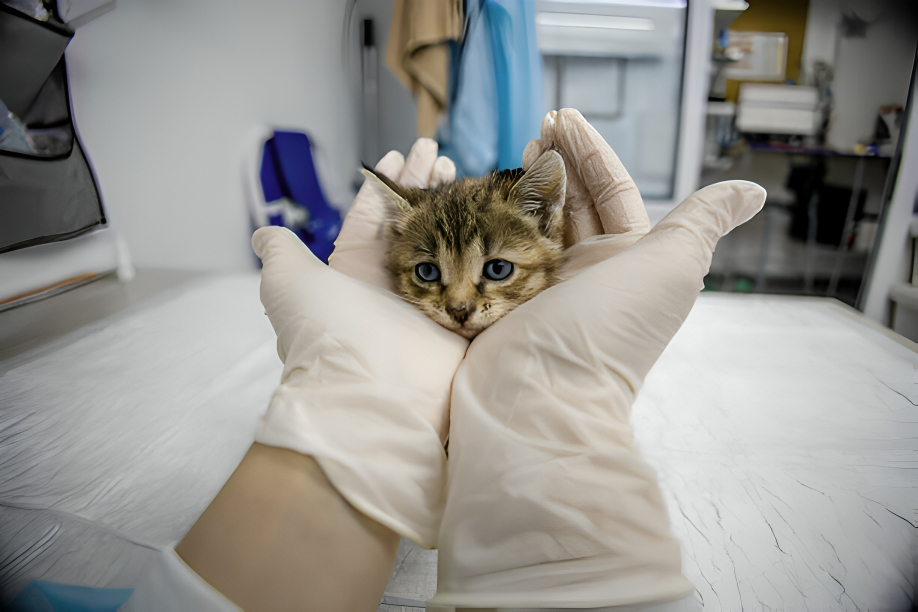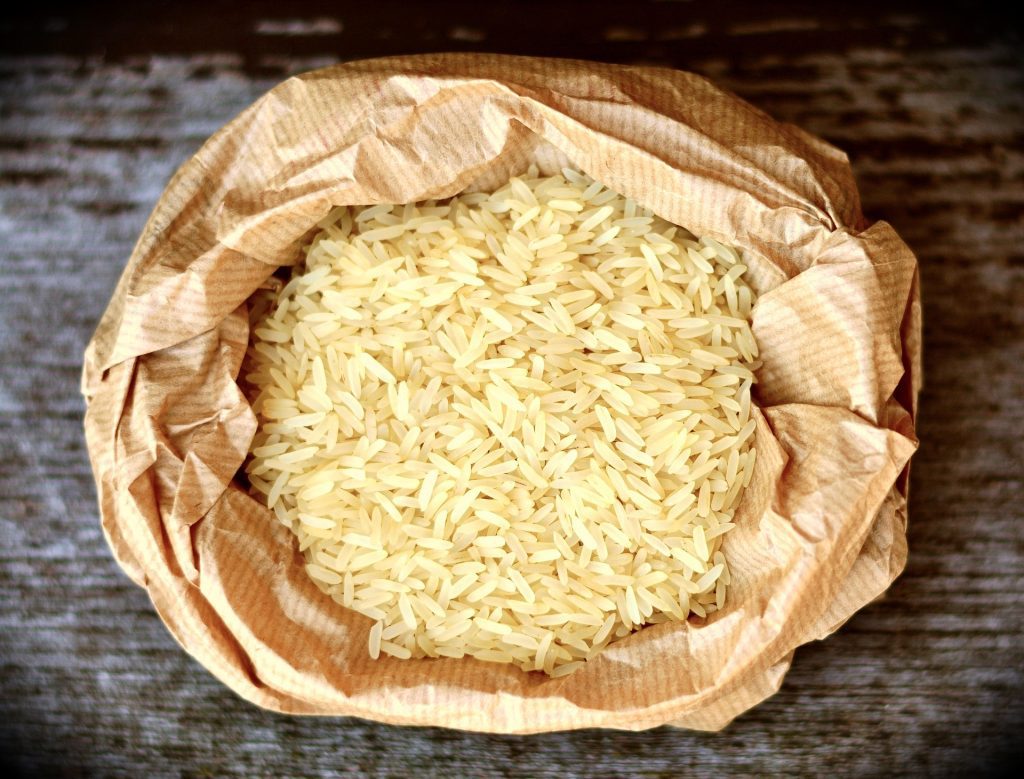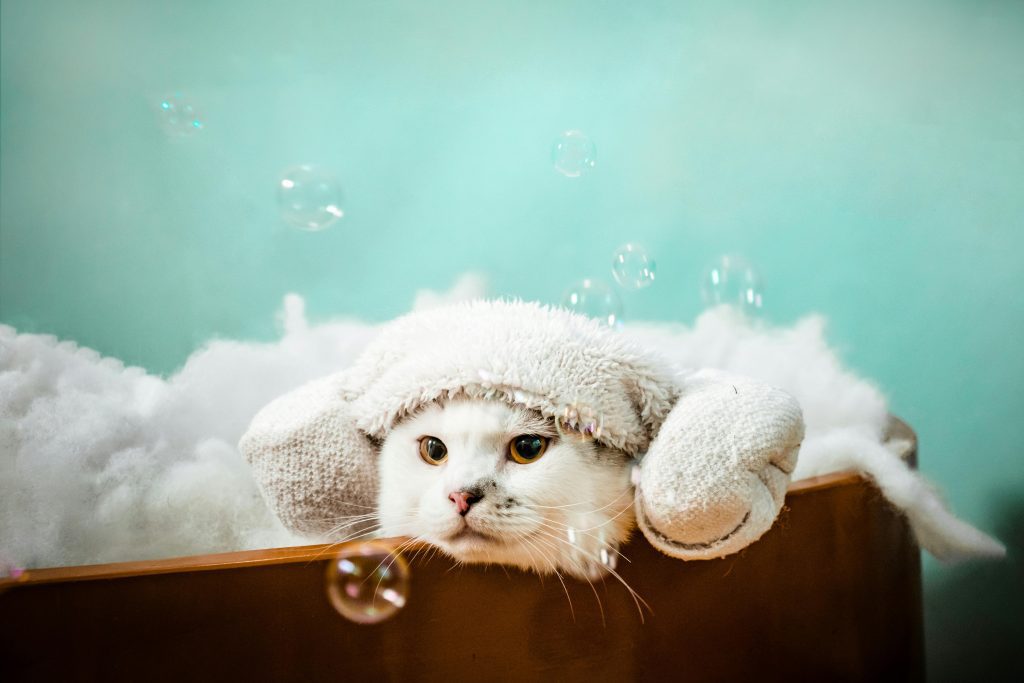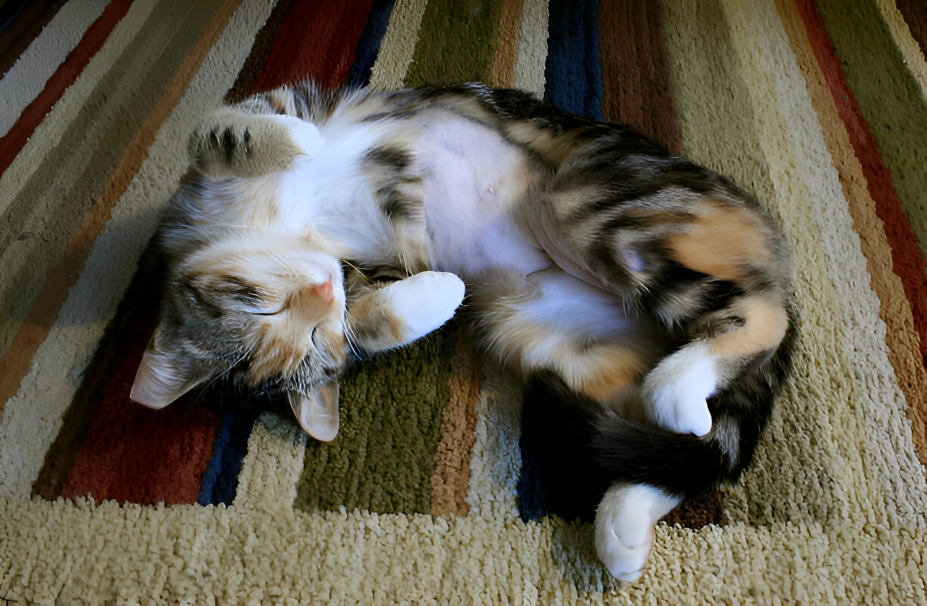Your Ragdoll’s soft chirps, gentle purrs, and dazzling blue eyes might make them seem almost invincible, but the truth is, even the healthiest Ragdoll isn’t immune to health issues.
Knowing what to watch for can help you spot early warning signs, act quickly, and give your cat the best chance at a long, happy life.
Inside, you’ll find the top health risks to know, simple ways to prevent them, and expert-backed advice to keep your gentle giant healthy—because proactive care isn’t just smart, it’s lifesaving.
Understanding Ragdoll Cat Health Risks
Ragdolls may look healthy and laid-back, but their genetic history makes them more vulnerable to certain conditions. Selective breeding and a limited gene pool have introduced specific health challenges that responsible owners should be aware of.
Males are at higher risk for urinary blockages, and both sexes tend to hide discomfort thanks to their calm, stoic nature, so issues can go unnoticed until they’re serious.
Here’s what you can do: choose reputable breeders who perform health screenings, watch litter box habits (especially in males), and never skip regular vet visits and routine checks.
Recognizing risks early isn’t alarmist—it’s how you keep your Ragdoll happy, healthy, and by your side for years to come. Now that you know what puts Ragdolls at risk, let’s look at the specific health problems to watch for.
The 7 Most Common Ragdoll Cat Health Problems
While Ragdolls are generally healthy, their genetics and lifestyle can make them prone to certain conditions. Knowing the signs, causes, and prevention steps can help you protect your cat’s health and catch issues early.
Recommended Post
Hypertrophic Cardiomyopathy (HCM)
A genetic heart condition where the heart muscle thickens, making it harder to pump blood properly. Signs can include lethargy, rapid or open-mouth breathing, fainting, or even sudden collapse. Approximately 30% of Ragdolls carry the HCM gene, making early screening a necessity.
As Dr. Mark Rishniw, a feline cardiologist, puts it: “Cats love to hide their clinical signs until they are in dire straits… One second they are fine, and the next second, it’s awful. Early heart screening gives owners a real head start against silent killers like HCM.”
How to help: Choose breeders who DNA-test for the MyBPC3 gene. Start heart checkups around age 3–5 and repeat every 1–2 years. If diagnosed, your vet may prescribe beta-blockers or diuretics to ease the heart’s workload and help manage symptoms.
Polycystic Kidney Disease (PKD)
An inherited condition that causes fluid-filled cysts in the kidneys and can lead to kidney failure over time. Signs to watch for include increased thirst, frequent urination, weight loss, vomiting, or a dull coat.
What you can do: Get your cat genetically tested early, especially if they came from a breeder. Keep tabs on kidney health with yearly blood and urine tests. Feed a kidney-friendly diet and add omega-3s to help support kidney function.
Obesity & Related Conditions
Ragdolls are naturally laid-back, so without enough playtime, they gain weight fast. Extra weight can lead to diabetes, arthritis, liver issues, and a shorter lifespan.
How to help: Skip free feeding—stick to portions. Keep your cat active with climbing trees, interactive toys, and puzzle feeders. Check their weight every month (aim for 10–20 lbs, depending on gender).
Urinary Tract Issues (UTIs & FLUTD)
UTIs and urinary blockages are common in Ragdolls, especially males with narrower urethras. Warning signs include straining to pee, blood in urine, frequent small trips, or accidents outside the litter box.
What you can do: Serve wet food to keep them hydrated, clean litter boxes often, and reduce stress at home. If your male Ragdoll can’t pee at all, get emergency vet help immediately—this can be life-threatening within hours.
Hairballs & Digestive Issues
With their long, silky fur, Ragdolls swallow a lot of hair while grooming. This can lead to vomiting, constipation, or loss of appetite.
How to help: Brush your cat two or three times a week (more during shedding season). Offer hairball-control food or supplements. A bit of pumpkin can help with fiber, and probiotics can support digestion.
Eye Conditions
Some Ragdolls can develop Progressive Retinal Atrophy (PRA), retinal detachment, or other eye problems. Symptoms may include dilated pupils, cloudy vision, night blindness, or watery eyes.
What you can do: Book annual eye checkups. Ask your breeder about PRA testing. If your cat seems hesitant to jump or bumps into things, see your vet as soon as possible.
Rare Genetic Disorders (MPS VI)
Feline Mucopolysaccharidosis Type VI is an inherited disorder that affects bones, joints, and organs. Signs can show up as poor growth, stiff joints, skeletal issues, or wobbly movement.
How to help: Prevention depends on responsible breeding—always choose breeders who screen for MPS VI. There’s no cure, but your vet can suggest supportive care and anti-inflammatories to help keep your cat comfortable.
You Might Also Like
When to See a Vet Immediately
Ragdolls are masters at hiding pain, so knowing the difference between a mild issue and an emergency can save your cat’s life. Act fast if you notice:
- Open-mouth breathing or wheezing → could mean heart failure, asthma, or fluid in the lungs.
- Straining or unable to urinate (especially in males) → may be a fatal urinary blockage.
- Sudden blindness or cloudy eyes → linked to high blood pressure or HCM complications.
- Severe vomiting or diarrhea lasting over 24 hours → risk of dehydration or toxin ingestion.
- Collapse, seizures, or unresponsiveness → possible heart, neurological, or poisoning emergency.
If your Ragdoll shows sudden, severe, or unexplained symptoms, don’t wait. Get them to an emergency vet immediately. When in doubt, trust your gut and call your vet—your Ragdoll will thank you.
FAQs
Do males have more health issues?
Slightly. Males are more prone to urinary tract problems and joint strain from their larger size. Keep an eye on weight and hydration.
How common is HCM?
Very. Studies show 30–40% of Ragdolls may carry the mutation. DNA test before adoption.
Can diet prevent genetic diseases?
No, but quality nutrition can delay symptoms and improve life quality.
Early warning signs?
Labored breathing, lethargy, excessive thirst—act quickly if you spot them.
Is pet insurance worth it?
Yes, especially for genetically prone breeds.
Final Thoughts
A Ragdoll’s health is shaped by genetics, proactive care, and attentive daily habits. While you can’t control everything, most risks can be managed—or even prevented—with early detection and consistent vet care.
Make these non-negotiables:
- Annual vet checkups (bi-annual after age 7)
- Routine health screening and weight monitoring
- Feeding a balanced, high-quality diet tailored to their needs
Subtle changes in behavior—like hiding, eating less, or moving slower—often mean more than just “a lazy day.” Trust your instincts. Staying ahead of problems is always easier than treating them later—and it’s the key to a longer, happier life.
That’s how I keep my own Ragdoll healthy—one brush, one checkup at a time. If this guide helped you, pass it along to another cat parent!
You Might Also Like
Founder of Cats Question, a veterinarian (DVM), and lifelong cat enthusiast with hands-on experience in feline care. Passionate about helping cat owners through expert-backed, compassionate advice inspired by years of living and learning alongside cats.
